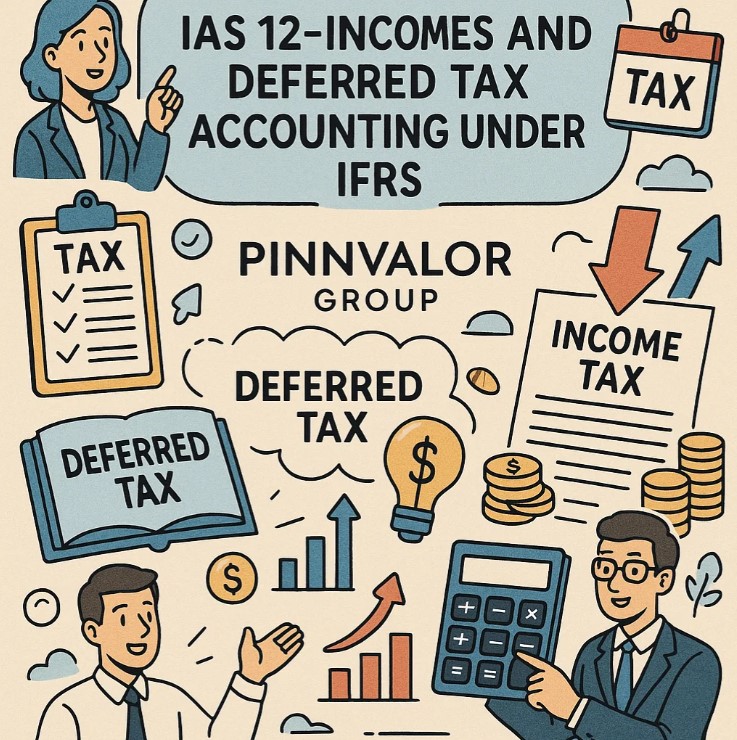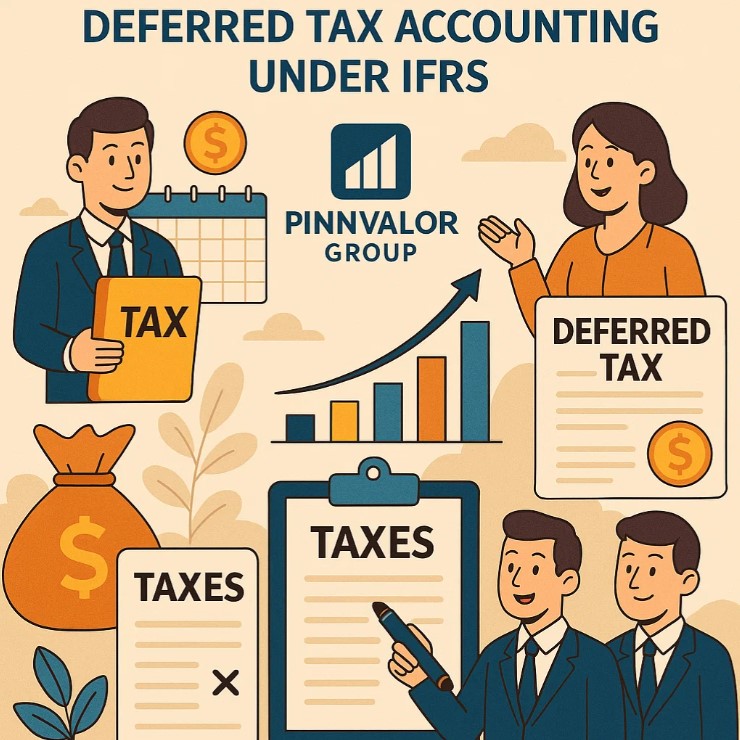
IAS 12 – Income Taxes and Deferred Tax Accounting under IFRS
Income tax accounting under IFRS is governed by IAS 12 – Income Taxes, a standard designed to ensure that the tax consequences of transactions are recognized consistently with their financial reporting. One of the most technically complex areas in IFRS, IAS 12 addresses both current tax and deferred tax, with a focus on aligning accounting profit with tax effects for accurate financial portrayal.
This blog provides a deep dive into the conceptual framework, recognition criteria, measurement, presentation, and disclosures of income taxes under IAS 12, along with practical insights and examples.
Are hidden tax effects silently shaping your financial story under IAS 12?
Behind every temporary difference lies a long-term tax implication. IAS 12 ensures that what’s deferred isn’t forgotten—it’s aligned, accounted, and disclosed.
📌 Key Objectives of IAS 12
- Recognize the current tax liability or asset for the current and prior periods.
- Recognize deferred tax liabilities and assets for future tax consequences of past transactions and events.
- Ensure that the tax effects follow the underlying transaction's accounting treatment (e.g., P&L, OCI, or equity).
🔍 Understanding the Two Pillars: Current vs Deferred Tax
✅ 1. Current Tax
Current tax is the amount of income taxes payable or recoverable in respect of the taxable profit or loss for a period, based on the applicable tax laws.
Recognition: Recognized as a liability (tax payable) or asset (prepaid tax) in the period in which the taxable profit arises.
🔄 2. Deferred Tax
Deferred tax arises due to temporary differences between the carrying amount of assets/liabilities in the financial statements and their tax base.
Types of Temporary Differences:
- Taxable temporary differences → Give rise to deferred tax liabilities.
- Deductible temporary differences → Give rise to deferred tax assets.
Key Concept: Deferred tax is based on temporary differences (not permanent ones), which will reverse over time.
📈 Recognition and Measurement
🔹 Deferred Tax Liabilities
Recognized for all taxable temporary differences, except:
- On initial recognition of goodwill.
- On initial recognition of assets/liabilities in a transaction that is not a business combination and affects neither accounting nor taxable profit.
🔹 Deferred Tax Assets
Recognized only if it is probable that future taxable profits will be available to utilize the deductible temporary differences.
Also includes:
- Unused tax losses
- Unused tax credits

📊 Measurement Principles
- Use enacted or substantively enacted tax rates expected to apply when the asset is realized or liability settled.
- Reflect tax planning strategies only if the entity expects to adopt them.
- No discounting of deferred tax balances is permitted under IAS 12.
📄 Presentation in Financial Statements
- Current and deferred tax are presented as separate line items in the statement of profit and loss.
- Deferred tax related to OCI (e.g., revaluation of PPE, FVTOCI investments) is recognized in OCI.
- Deferred tax relating to items in equity (e.g., share-based payments) is recognized directly in equity.
📢 Disclosure Requirements
- Major components of tax expense (current and deferred)
- Reconciliation between accounting profit and taxable profit
- Details of unused tax losses and credits
- Nature and expiry of temporary differences not recognized
🔍 Practical Examples
Example 1 – Deferred Tax Liability:
If a company uses accelerated depreciation for tax purposes and straight-line for accounting, the carrying amount of the asset exceeds the tax base, resulting in a deferred tax liability.
Example 2 – Deferred Tax Asset:
If a company has incurred tax losses in prior years but expects profits in future, a deferred tax asset is recognized for the carry-forward losses, assuming future taxable income is probable.
⚖️ IAS 12 vs Ind AS 12 – Key Differences
| Aspect | IAS 12 (IFRS) | Ind AS 12 (India) |
|---|---|---|
| Recognition criteria | “Probable” for DTA | Same |
| Tax rate consideration | Substantively enacted | Enacted or substantively enacted |
| Discounting deferred tax | Not allowed | Not allowed |
| MAT/Minimum tax treatment | Not applicable globally | Special provisions under Ind AS 12 |
💡 Challenges and Judgments
- Assessing future taxable profits to support deferred tax assets.
- Managing tax base estimation for complex instruments.
- Handling cross-border tax effects and intercompany transfers.
- Disclosures in a multi-jurisdictional environment.
🧩 Strategic Implications
- Financial Statement Impact: Deferred taxes can significantly affect reported profits and equity.
- Tax Planning: Understanding deferred tax helps in better planning and optimizing effective tax rates.
- Investor Communication: Clear explanation of deferred tax positions enhances transparency.
✍️ Conclusion
IAS 12 plays a vital role in linking tax accounting with financial reporting. While the mechanics can be complex, a sound understanding of temporary differences, recognition thresholds, and measurement principles is key for accurate and compliant financial statements.
As businesses navigate evolving tax landscapes and global reporting requirements, getting IAS 12 right is no longer optional—it's fundamental to financial integrity.
